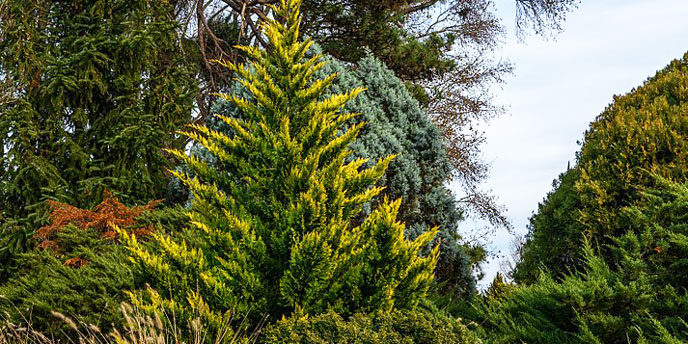


Birds are attracted to this shrub, which can also be used as a hedge plant.
#EVERGREEN SHRUBS PACIFIC NORTHWEST FULL#
A hardy shrub, it can be planted in full sun or part shade. Mock Orange has white fragrant flowers in the summer. It attracts bees and flies as pollinators. It is one of the first shrubs to flower in the spring (February). The bittersweet small fruit ripens in the fall and can provide winter feed for birds and other wildlife. You need male and female plants for fruit. It grows as a multi-stemmed shrub to between 5 – 20 ft. The Indian Plum is attractive to birds such as cedar waxwings and is also eaten by mammals. This shrub can be planted in the sun or shade. In the winter, the branches have peeling reddish-colored bark. Pacific Ninebark has glossy leaves and puffy white flowers that turn red in the fall and then to yellow seeds. This native shrub has year-round interest. Pacific Ninebark ( Physocarpus capitatus) It likes fairly wet soil and can grow in full sun from 3 – 18 ft. Birds are attracted to Red-osier Dogwood. The white flowers are sometimes present with the white berries. Its red twigs are pretty, followed by leaves of reddish burgundy. This fast-growing shrub has year-round interest. Red-osier Dogwood ( Cornus sericea or Cornus stolonifera ) Oregon Grape, the state flower of Oregon, has attractive foliage, yellow flowers, and blue “grapes.” It can be used as a hedge plant and is evergreen. Tall Oregon Grape ( Berberis aquifolium ) Oceanspray is drought tolerant and likes the sun. It is also known as Ironwood due to the strength of its wood. Oceanspray has cascading, creamy-white flower clusters and an arching habit. Red-flowering Currant grows upright to between 3 – 9 ft. Other birds also enjoy the berries, but they are non-edible to humans. This shrub really brightens up your garden in early spring. Red-flowering Currant ( Ribes sanguineum ) Some Top Native Shrubs for the Pacific Northwest:

They do not require fertilizers and require fewer pesticides than lawns.They conserve water because they are adapted to our area.They provide nectar, pollen, and seeds that serve as food for pollinators and other animals.They don’t require as much water and can also reduce rainwater runoff and even erosion in the landscape.This means keeping them alive year-round may not be as difficult in the long term as more cultivated plants. Native shrubs are adapted to our environment.If you are looking for a way to use fewer pesticides, less water, and create shelter and food for wildlife, then native shrubs may be a great addition to your garden.


 0 kommentar(er)
0 kommentar(er)
